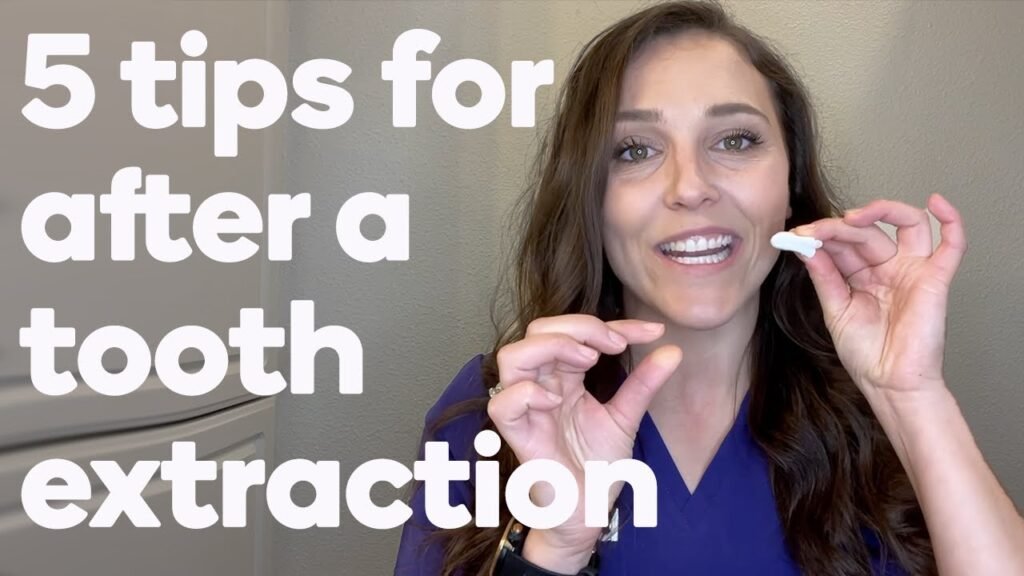Post-Tooth Extraction Diet: What to Eat

If you've recently had a tooth pulled, you may be wondering what you can eat without causing discomfort or delaying healing. Fortunately, there are plenty of soft and easy-to-chew foods that can help you stay nourished and comfortable during the recovery process. From smoothies and yogurt to mashed potatoes and scrambled eggs, there are numerous options to keep you satisfied while you heal. In this article, we'll explore a variety of post-tooth extraction food choices to help you navigate this temporary dietary adjustment with ease.
After a tooth extraction, how soon can I eat?
After getting a tooth extraction, it is recommended to wait about an hour before eating. During this time, you can remove the gauze sponges from your mouth and have something to eat. It is important to stick to soft foods for the first 24 hours and avoid hot foods and drinks for a few hours. Additionally, refrain from using a straw for at least 24 hours to prevent any complications.
What are some recommended foods to eat after getting a tooth extracted?
After a tooth extraction, it is important to stick to soft and easy-to-chew foods to promote healing. Opt for options like mashed potatoes, cottage cheese, soft rice or pasta, squash, and hummus. Ripe, seedless fruits and mashed avocado or guacamole are also good choices. Remember to cut your portions into small pieces to make chewing easier and avoid any potential irritation to the extraction site.
Is it okay to eat pasta after having a tooth extraction?
Yes, you can eat pasta after a tooth extraction. In fact, it is a recommended option for surgery recovery food. However, it is important to ensure that the pasta is not al dente. Opt for a softer and slightly mushy texture to make it easier to eat. Additionally, pasta can be paired with a variety of blended sauces, making it a versatile and satisfying meal choice during the recovery period. So go ahead and enjoy a comforting bowl of pasta to help aid in your healing process.
Nourishing Your Body: The Best Foods for Post-Tooth Extraction Recovery
After undergoing a tooth extraction, it is important to nourish your body with the right foods to aid in a speedy recovery. Opt for soft, easy-to-chew foods that are rich in nutrients and low in acidity. Foods such as yogurt, mashed potatoes, and smoothies are not only gentle on the healing site but also provide essential vitamins and minerals to support the healing process.
Incorporating protein-rich foods into your diet is crucial for post-tooth extraction recovery. Lean meats, eggs, and legumes are excellent sources of protein, which is essential for tissue repair and rebuilding. Additionally, including foods high in vitamin C, such as citrus fruits and leafy greens, can help boost your immune system and aid in the healing process.
Avoiding sticky, crunchy, and hard foods is key to preventing any discomfort or damage to the extraction site. Opt for nourishing foods that are easy to consume and gentle on your mouth. By choosing the best foods for post-tooth extraction recovery, you can ensure a smoother healing process and get back to your normal routine in no time.
Eating Well After Extraction: A Guide to Healing and Nutrition
After having a tooth extraction, it is important to pay attention to your diet in order to promote healing and reduce the risk of complications. Consuming soft, easy-to-chew foods such as yogurt, mashed potatoes, and smoothies can help prevent irritation to the extraction site and allow for proper healing. Additionally, incorporating nutrient-dense foods like leafy greens, lean proteins, and fruits can support your overall health and aid in the healing process. It is essential to stay hydrated and avoid foods that can potentially harm the extraction site, such as hard candies or crunchy snacks. By following a well-balanced and gentle diet, you can support your body in healing after extraction while also maintaining proper nutrition.
Incorporating a variety of nutrient-rich foods into your diet after a tooth extraction is crucial for promoting healing and overall well-being. Foods high in vitamin C, such as citrus fruits and bell peppers, can aid in tissue repair and reduce the risk of infection. Additionally, incorporating foods rich in vitamin K, such as spinach and kale, can support blood clotting and aid in the healing process. It is important to avoid sticky or crunchy foods that can potentially disrupt the healing process and cause discomfort. By prioritizing nutrition and consuming a gentle, well-rounded diet, you can support your body in healing after extraction while also promoting overall health and well-being.
Overall, after having a tooth pulled, it is important to stick to soft, easy-to-chew foods that are gentle on the healing area. Opt for options like yogurt, mashed potatoes, smoothies, and scrambled eggs to ensure a speedy recovery and minimize discomfort. Remember to avoid crunchy, hard, or sticky foods to promote healing and prevent any complications. By following these guidelines, you can help your mouth heal efficiently while still enjoying delicious and nourishing meals.